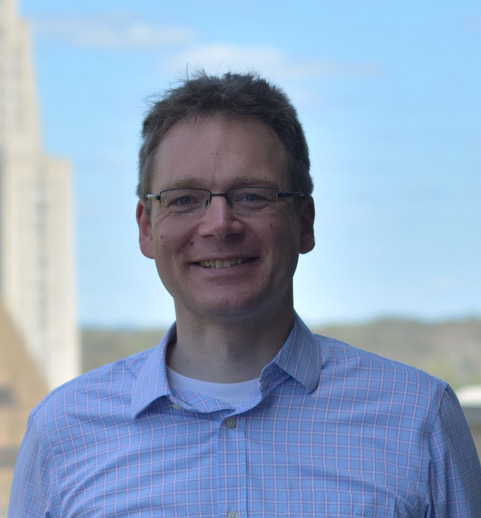Patrick van der Wel - Expert in solid-state NMR spectroscopy joins Zernike Institute
Professor Patrick van der Wel used to utilize NMR spectroscopy especially to find answers to difficult biological questions. On August 1 he will enter a professorate at the Zernike Institute for Advanced Materials (ZIAM). He is full of ambition: “I would like to integrate solid-state NMR further into biophysics and materials science, through collaboration with specialists in other fields.”

In the development of new materials, the properties of the building blocks are very important. Unfortunately, it is not easy to see these building blocks—molecules. Most of the available techniques require that the molecules are either dissolved in water or crystallized. But this alters their behavior compared to their “natural” environment. “With solid-state NMR spectroscopy, we can view molecules without first dissolving or crystalizing them,” Van der Wel explains. “This allows us to study their structure or dynamics under almost any circumstances.”
Huntington
In recent years, Van der Wel worked at the medical department of the University of Pittsburgh in the United States. “I focused on neurodegenerative diseases, which are characterized by the clustering of proteins in the brain. Those proteins form a kind of nanomaterial, which in the long run has devastating consequences for the brain cells. I especially study the formation of these structures in Huntington’s disease. This incurable disease, which is of great interest for researchers in Groningen and elsewhere in the Netherlands, will remain an active area of research for Van der Wel.
Making gold with grease
The formation of supramolecular structures is also important outside of the human body. “They are used in the development of so-called ‘smart’ materials. Solid-state NMR spectroscopy can be helpful in the study of such materials.” Van der Wel has some experience with this line of study. “For instance, in 2016 our group published an interesting article about biologically inspired nanostructures that shape gold particles into superstructures.”
NMR in materials science
This type of NMR spectroscopy has many applications in materials science, according to Van der Wel. “For example, in the production of sensors and solar panels, it is important to know the exact properties of the materials. NMR measurements allow you to link atomic structure to function. This allows for more deliberate design instead of trial and error.”
Collaboration
Van der Wel thinks of his appointment in Groningen as Professor of Solid-state NMR as an opportunity to learn and study new things. “It is an interesting challenge to apply solid-state NMR to new developments in biophysics and materials science. There is much I could learn from that.” He is already working hard at making new contacts. “I love to work with colleagues, not only within ZIAM, but also, for instance, with institutes that specialize in biological materials.”| Last modified: | 09 August 2018 1.50 p.m. |
More news
-
16 December 2024
Jouke de Vries: ‘The University will have to be flexible’
2024 was a festive year for the University of Groningen. Jouke de Vries, the chair of the Executive Board, looks back.
-
10 June 2024
Swarming around a skyscraper
Every two weeks, UG Makers puts the spotlight on a researcher who has created something tangible, ranging from homemade measuring equipment for academic research to small or larger products that can change our daily lives. That is how UG...
